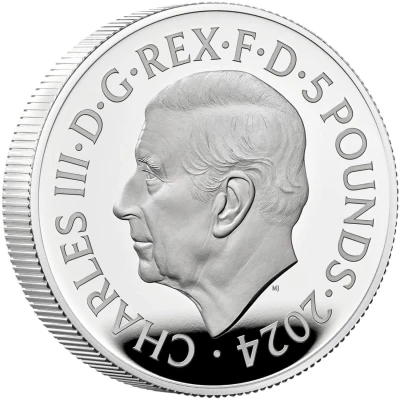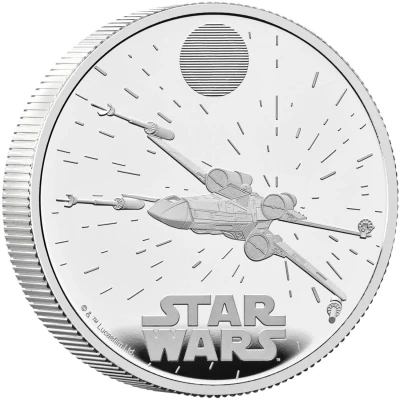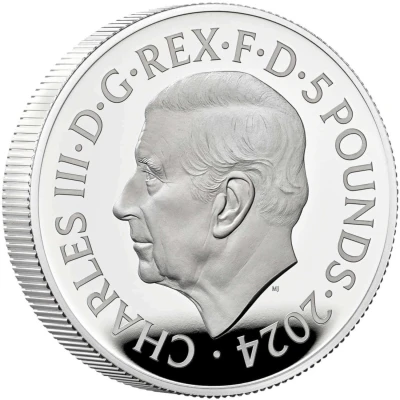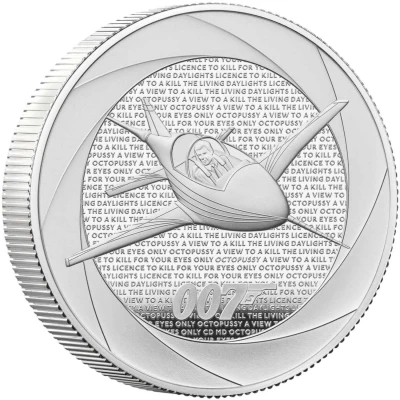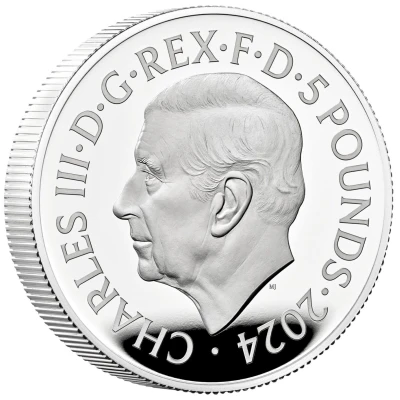
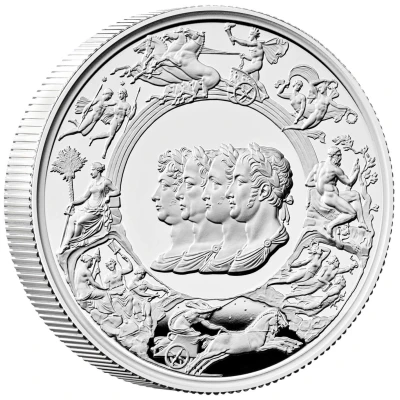

5 Pounds - Charles III The Waterloo Medal Allied Leaders; Silver Proof
2024 year| Silver (.999) | 62.86 g | 40.00 mm |
| Issuer | United Kingdom (United Kingdom, British Overseas Territories and Crown Dependencies) |
|---|---|
| King | Charles III (2022-date) |
| Type | Non-circulating coin |
| Year | 2024 |
| Value | 5 Pounds 5 GBP = USD 6.54 |
| Currency | Pound sterling (decimalized, 1971-date) |
| Composition | Silver (.999) |
| Weight | 62.86 g |
| Diameter | 40.00 mm |
| Shape | Round |
| Technique | Milled |
| Orientation | Medal alignment ↑↑ |
| Updated | 2024-10-09 |
| Numista | N#422835 |
|---|---|
| Rarity index | 92% |
Reverse
The busts of four allied monarchs, seen grouped in profile to the left: George, Prince Regent; Francis II (Emperor of Austria); Alexander I (Emperor of Russia); and Frederick William III (King of Prussia). An array of figures feature in the border framing these portraits, creating an allegorical and mythological allusion to the Treaty of Peace which resulted from the great triumph in the field of battle.
Script: Latin
Designer: Benedetto Pistrucci
Edge
Reeded
Script: Latin
Comment
Issued individually with an issue limit of 3,060.
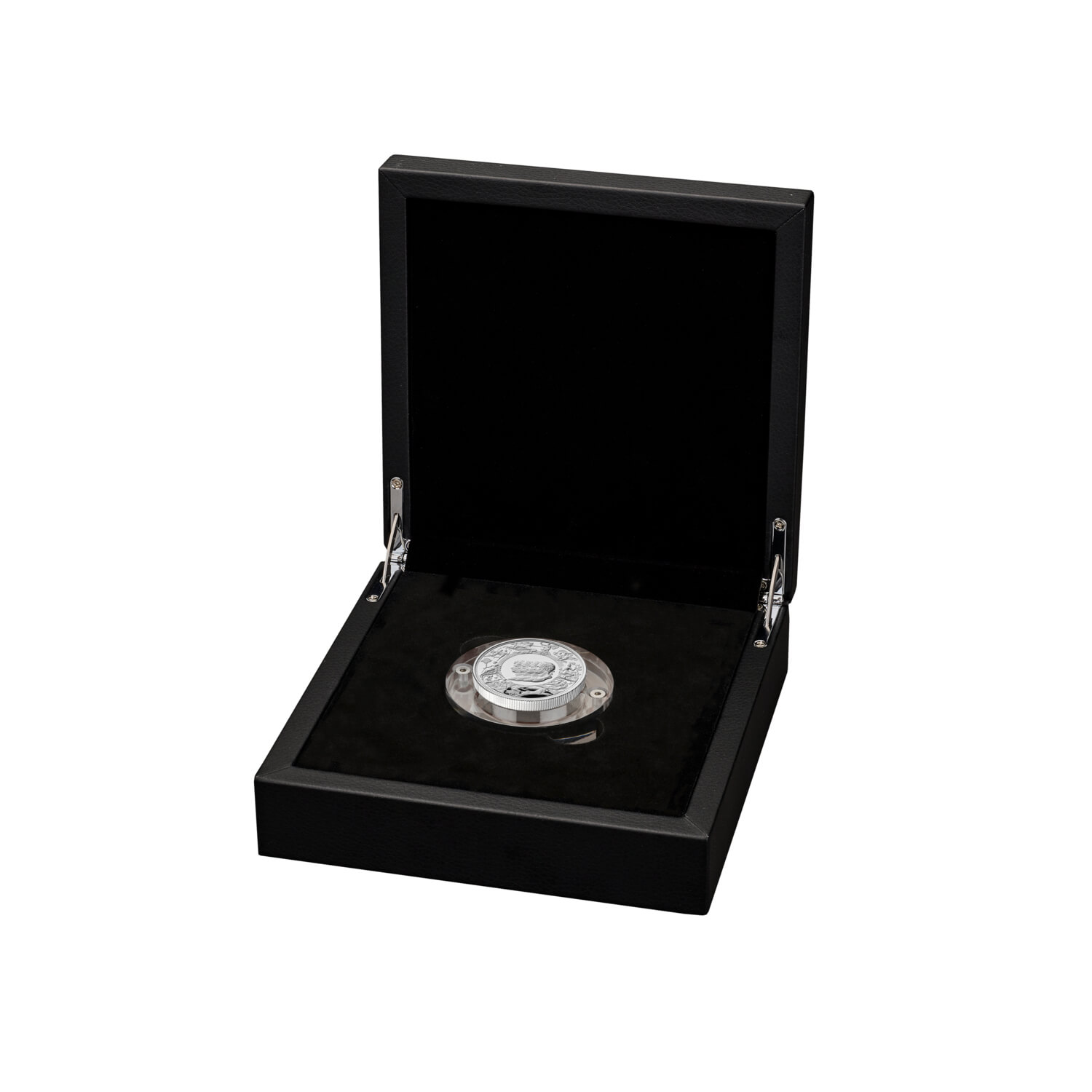
© The Royal Mint, 2024
Apollo is presented at the top of the obverse in his quadriga restoring the day.
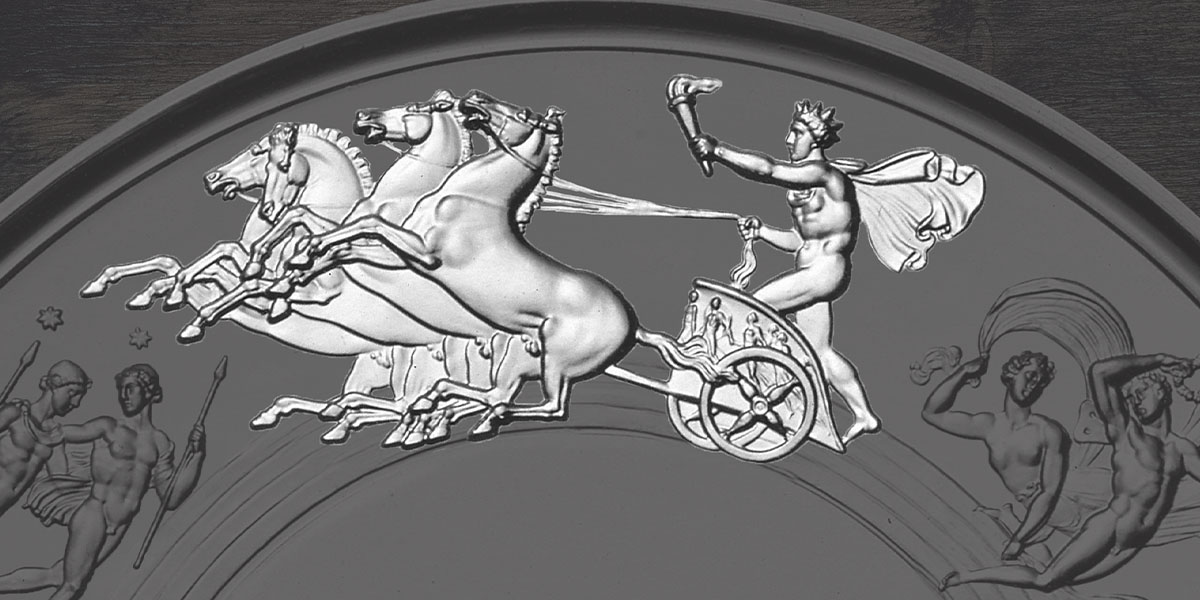
The rainbow Zephyr and Iris follow the chariot of the sun in succession, but the Zephyr is tending towards the earth and scattering flowers as a symbol of peace and tranquillity.
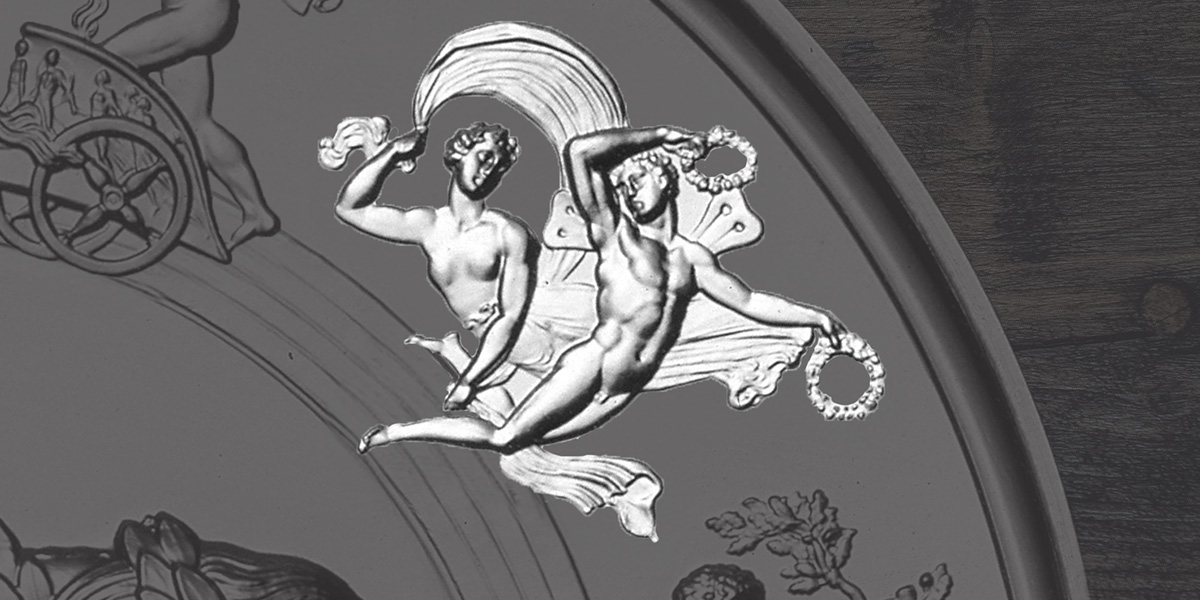
The chariot hurtles towards the constellation Gemini and therefore symbolises the month in which the great contest took place. Castor and Pollux, with spears, represent the apotheosis of Wellington and Blücher; Themis, the goddess of Justice, appears on earth, as in the golden age.
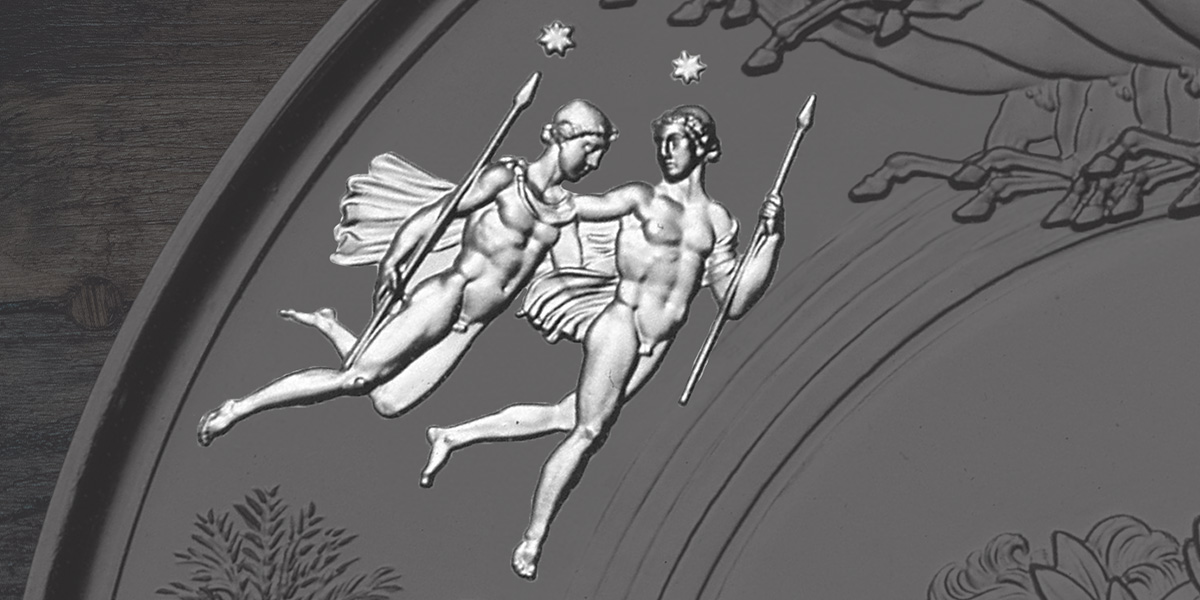
This figure is placed in front of the profile busts of the sovereigns, to show that justice is a greater security to the government than power. The goddess is seated upon a rock, with a palm tree waving overhead; she is prepared to reward virtue with its branches in one hand, and in the other she holds a sword for the ready punishment of crime.
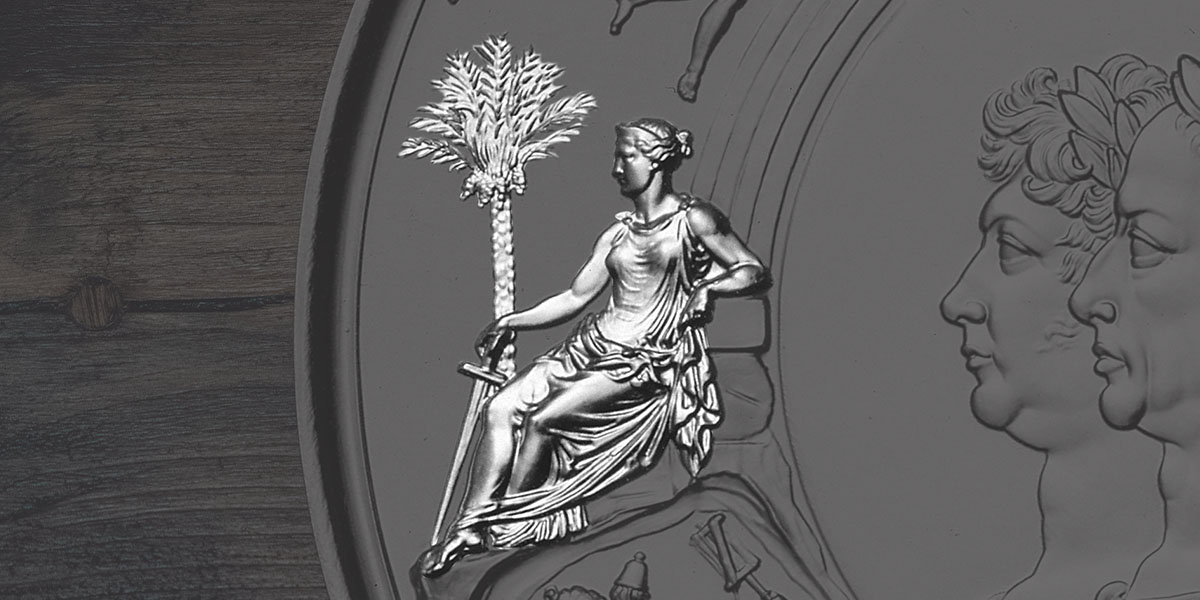
A robust man of mature age, bearded, and armed with a club, personifies Herculean power. He is seated under an oak tree and forms the corresponding figure at the back of the group of busts of the allied sovereigns.
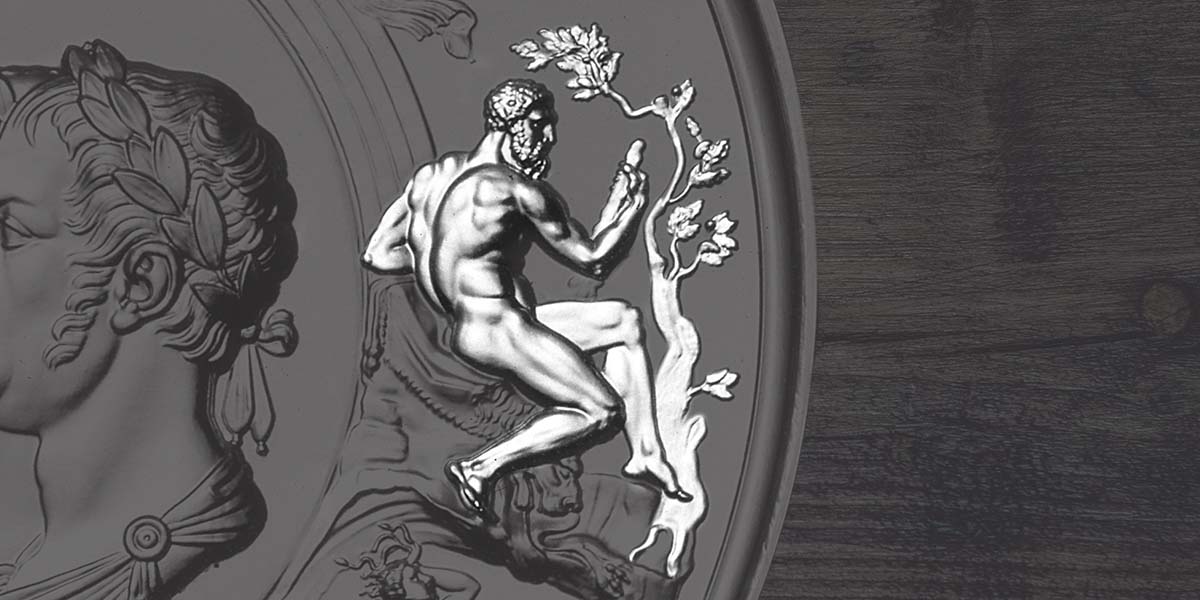
In the middle, a figure is seen driving a chariot pulled by horses. This figure is typically identified as Victory or Nike, the goddess of victory in Greek mythology. The dynamic movement and the forward momentum of the horses signify triumph and swift success. To the left, there are three seated figures, representing gods or notable figures of antiquity. They are holding attributes or symbols, such as laurels or sceptres, symbolizing authority, wisdom, or martial prowess. To the right, there are several flying figures, representing angels or other mythological beings. These figures may symbolize divine support or the carrying of news of victory.
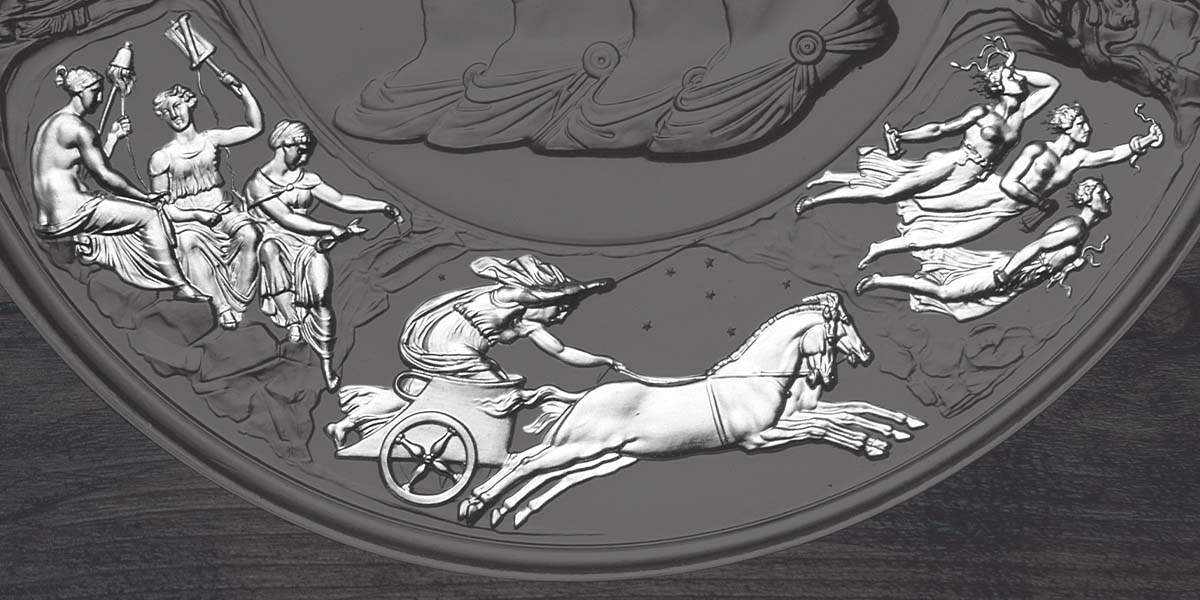
© The Royal Mint, 2024
Interesting fact
One interesting fact about the coin is that it features a unique design, showcasing the effigy of King Charles III, surrounded by the Allied leaders of the Battle of Waterloo, which took place on June 18, 1815. The coin commemorates the 200th anniversary of the battle, and the design is inspired by the famous Waterloo Medal, which was awarded to the Allied leaders who fought alongside the British in the battle. The coin's design is a nod to the historic event and serves as a reminder of the significance of the Battle of Waterloo in shaping European history.
